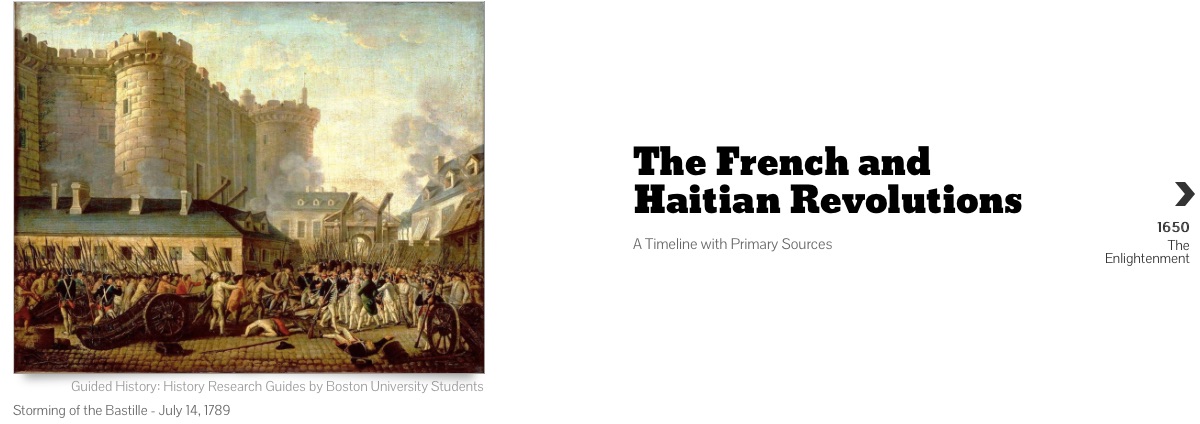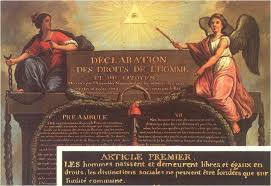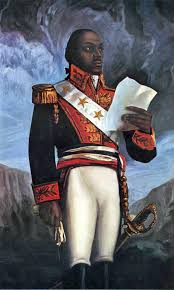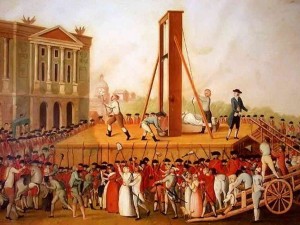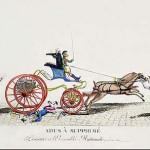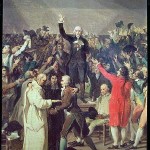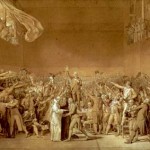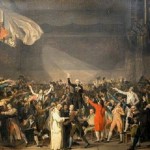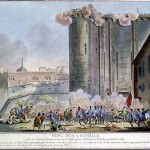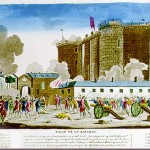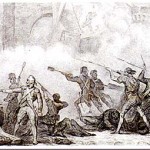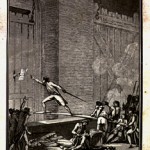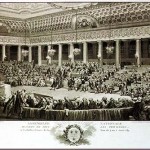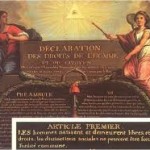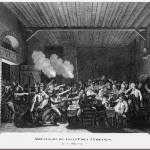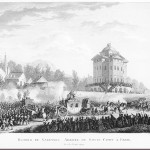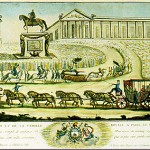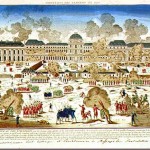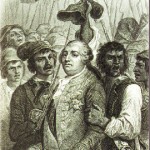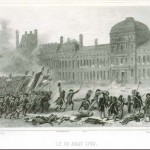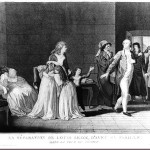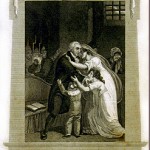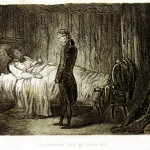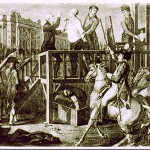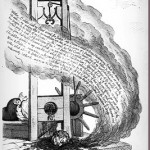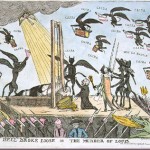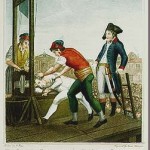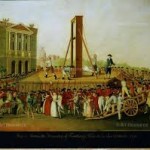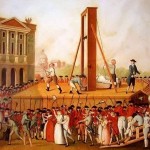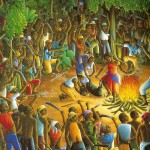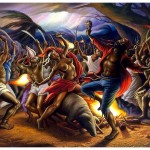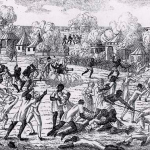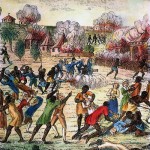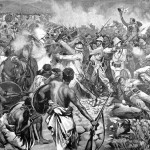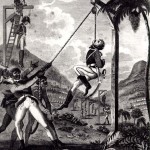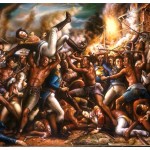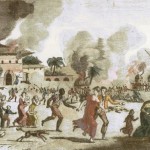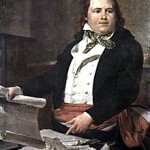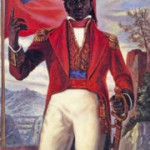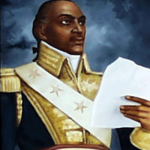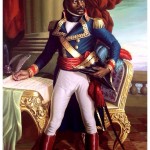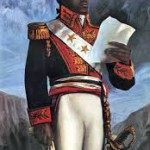
French and Haitian Revolutions
While the French Revolution is normally taught in isolation from its Caribbean counterpart, the Haitian Revolution, the two revolutions are inextricably intertwined. Here we have provided printable primary sources and free teaching resources on both revolutions. We have also created a timeline of events with embedded primary sources to emphasize the deep interconnection of these two revolutions.
Enlightenment Thinkers
John Locke- Two Treatises on Civil Government: excerpts on Locke’s social contract.
Montesquieu- The Persian Letters: criticisms of Louis XIV.
Voltaire- Internal Government: praises for Louis XIV’s internal reforms.
A Vindication of the Rights of Woman: British writer Mary Wollstonecraft argues for the natural equality of women and the need to grant them more rights.
French Revolution Documents
Louis Convenes the Estates-General: Louis XVI convokes the Estates-General.
Tennis Court Oath: the founding oath of the National Assembly.
The 4th of August Decrees: the complete abolition of feudalism by the National Assembly.
Law on the Colonies, 1791: the granting of citizenship rights to free men of colour whose parents were born free and who own sufficient property.
Constitution of 1791: the first constitution drafted by the National Assembly after the Tennis Court Oath which limited the powers of the monarchy.
Execution of Louis XVI: a first hand account of the last two hours of Louis XVI’s life, written by the priest who followed him in the carriage to his execution.
Constitution of 1793: the republican constitution drafted by the National Convention after the overthrow of the monarchy.
Terror is the Order of the Day: the National Convention votes to use force against its own citizens in order to ensure compliance with the law and the protection of the revolution.
Justification of the Use of Terror: Maximilien Robespierre’s justification of the use of terror against the French population.
Abolition of Slavery: the document ratifying the abolition of slavery in French territories.
Constitution of 1795: the Constitution drafted by the Directory after the fall of Robespierre, the end of the Terror, and the return of moderates to power in France.
Napoléon’s Constitution of 1799: the Constitution implemented by Napoléon Bonaparte after his 1799 coup d’état, creating the Consulate.
Human Rights Documents
Le Code Noir: issued by Louis XIV in 1685 to regulate the treatment of slaves.
American Declaration of Independence: the independence document that partially inspired the Declaration of the Rights of Man and Citizen.
Declaration of the Rights of Man and Citizen: the revolutionary document declaring all men to be equal and have universal, inviolable rights.
Condorcet, On the Admission of Women to the Rights of Citizenship: a powerful piece by the Marquis de Condorcet arguing for the equality of women to men.
Declaration of the Rights of Woman and Female Citizen: Olympe de Gouges’ famous parallel of the Declaration of the Rights of Man and Citizen declaring women equal to men in all respects.
A Vindication of the Rights of Woman: excerpts from English author Mary Wollstonecraft’s infamous work, A Vindication of the Rights of Woman.
Petitions and Grievances
Petition of the Women of the Third Estate to the King: as public discontent was growing in France in 1789, these women politely voiced their grievances to the King, asking not to be equal with men but merely to have their conditions ameliorated.
A Woman’s Cahier: an unknown woman argues for the inclusion of women in the 1789 convocation of the Third Estate.
Women’s Petition to the National Assembly: a petition to the National Assembly written shortly after the March on Versailles demanding gender equality.
Address to the National Assembly: an address by some free citizens of colour in the colonies citing chronic violations of their rights overseas and asking the National Assembly to act on their behalf to ensure that their rights are protected.
In Favor of the Abolition of the Slave Trade: written by the Society of the Friends of the Blacks in 1790 in favour, not of abolishing slavery itself, but of abolishing the system in which Africans were kidnapped from their homes and sent to the colonies.
Slavery, Revolution, and Independence in Saint Domingue
Slave Letters from Martinique: after a small slave revolt in the French colony of Martinique, these slaves wrote letters to the governor demanding their freedom.
Letter to the Citizens of Colour and the Free Negroes of Saint Domingue: a letter written by Abbé Grégoire of the Society of the Friends of the Blacks in June 1791.
Boukman’s Prayer: the prayer that is said to have been given by Dutty Boukman during the Bois Caiman Meeting.
Toussaint during the Boukman Rebellion: a letter from Toussaint Louverture to Georges Biassou, a commander of the rebel slaves, during the Boukman Rebellion of 1791.
Sonthonax Broadside: broadside issued by French Commissioner Léger Sonthonax defending his decree of 1793 abolishing slavery against the protests of angry planters.
‘I granted their lives…’: a 1796 correspondence by Toussaint Louverture describing his capture and release of a troop of free men of colour.
‘You want to slaughter all the whites?’: a report by Toussaint Louverture in which he accuses Sonthonax of wanting to kill most of the white men in the colony in order to secure the freedom of the slaves.
Toussaint’s Dictatorial Proclamation: a proclamation issued by Toussaint in 1801 outlining his policies for Saint Domingue.
1801 Constitution: in response to Napoléon’s 1799 Constitution, Toussaint made the bold move of writing this separate constitution for Saint Domingue in 1801. Find it here in French.
Declaration of Independence: in 1804, Jean-Jacques Dessalines proclaimed Saint Domingue independent and had this formal declaration written.
1805 Constitution of Haiti: Saint Domingue was renamed ‘Haiti’ in 1805, and this was the new state’s first constitution.
“Struggle for Recognition“: an article written in 1917 for the Journal of Negro History on the struggles of Haiti and Liberia to achieve international recognition.
Ressources Françaises
Le serment du jeu de paume: le serment fondateur de l’Assemblé nationale
Archive parlementaire 14 juillet 1789: archive parlementaire du jour de la prise de la Bastille, contenant le premier rapport de l’incident à l’Assemblée nationale.
Archive parlementaire 15 juillet 1789: le roi Louis XVI et l’Assemblée nationale débattent les solutions potentielles pour rétablir le calme en Paris.
Déclaration des droits de l’homme et le citoyen: le document révolutionnaire déclarant tous les hommes égaux et ayant certains droits et libertés universels et inviolables.
Déclaration des droits de la femme et de la citoyenne: la déclaration fameuse d’Olympe de Gouges en réponse de la Déclaration des droits de l’homme et le citoyen.
Archive parlementaire 10 août 1792: archive parlementaire du jour de la Prise des Tuileries, contenant des témoins oculaires des violences et les débats des membres de l’Assemblée au sujet de comment rétablir le paix.
Abolition de la royauté: la Convention nationale décrète la royauté abolie en France.
Video Resources
Crash Course World History: The French Revolution: a concise 12 minute YouTube video explaining the causes and key events of the French Revolution.
Crash Course World History: The Haitian Revolution: a concise 12 minute YouTube video explaining the causes and key events of the Haitian Revolution.
PBS Égalité for All: Toussaint Louverture and the Haitian Revolution: a fantastic hour-long PBS documentary on the Haitian Revolution.
Annenberg Learner: Ideas Shape the World: a 28 minute video that truly takes a global approach to the Age of Revolution, connecting the Enlightenment, Revolutions in the Americas and in France, and Islamic revitalization movements.
Lesson Plans:
Making the French Revolution Meaningful: a lesson plan on the French Revolution from Teaching Channel. Students combine research from primary and secondary sources to ‘create identities’ for themselves. Each student takes on a different role, e.g. a baker or the wife of a coffee importer, while the teacher wanders the classroom asking questions about how they think they might be affected by the French Revolution. Includes a video from the teacher who designed the activity, and registration (free) provides access to lesson plan and supporting documents. Some other documents you might include are Petition of the Women of the Third Estate to the King for an ordinary woman’s perspective and Robespierre’s Justification of the Use of Terror.
Human Rights in the Making: The French and Haitian Revolutions: a fantastic lesson plan exploring the first stages of the French Revolution provided by the University of California, Los Angeles’s The National Center for History in the Schools. The lesson plan includes primary sources, timelines, and brief ‘historical context’ essays. You could also include the Address to the National Assembly by free citizens of colour demanding their rights or the Women’s Petition to the National Assembly demanding more gender equality to further explore how the simple institution of the Declaration of the Rights of Man and Citizen was but the beginning of the struggle for human rights. The full version of this lesson plan is available for purchase.
Who Was Toussaint Louverture?: a lesson plan on Toussaint Louverture with 7 primary sources, a lesson plan guide, and a presentation giving historical context. You could also include two letters by Toussaint, Toussaint during the Bookman Rebellion and ‘I granted their lives…’, to compare Toussaint’s own writings with the writings about him by others.
Check out our image gallery below to find some visual resources for your lessons!
Further Reading
Annenberg Learner: Ideas Shape the World: 3 excellent articles placing the French Revolution in a global context available as online PDFs from Annenberg Learner’s Bridging World History page.
Desan, Suzzane, Lynn Hunt, and William Max Nelson. The French Revolution in Global Perspective. Ithaca: Cornell University Press, 2013.
Dubois, Laurent. Avengers of the New World: the story of the Haitian Revolution. Cambridge, Mass.: Belknap Press of Harvard University Press, 2004.
—–. A Colony of Citizens: Revolution & Slave Emancipation in the French Caribbean, 1787-1804. Chapel Hill, N.C.: University of North Carolina Press, 2004.
—–. Haiti: The Aftershocks of History. York: Picador / Metropolitan Books, 2013.
Dubois, Laurent, and John D. Garrigus. Slave Revolution in the Caribbean, 1789-1804: a Brief History with Documents. Boston: Bedford/St. Martin’s, ©2006.
Kim, Caroline. “The Soul of a Free Man,” HUMANITIES 24, no. 6 (November/December 2003): a brief essay on Toussaint Louverture’s role in the liberation of Saint Domingue.
Sepinwall, Alyssa Goldstein. “Teaching About Haiti in World History: An Introduction.” World History Connected 10, no. 2 (June 2013). http://worldhistoryconnected.press.illinois.edu/10.2/sepinwall.html. Accessed August 17, 2015.
Teaching about Haiti: a free downloadable PDF made available online for teachers by Teaching for Change.
World History Makeover: The French Revolution: an article written for teachers with tips on how to explore global perspectives on the French Revolution in the classroom for the first time.
Visual Resources
- Depiction of the Three Estates.
- Abuses to Suppress
- Tennis Court Oath
- Tennis Court Oath
- Tennis Court Oath, 20 June 1789.
- Tennis Court Oath
- Victory for the Third Estate
- Storming of the Bastille
- Storming of the Bastille
- Storming of the Bastille
- Storming of the Bastille
- Storming of the Bastille
- Capitulation letter handed to the people.
- The National Assembly.
- Declaration of the Rights of Man and Citizen, August 26, 1789.
- Louis and Marie Antoinette arrested
- Louis returns to Paris after arrest at Varennes.
- Louis returns to Paris after arrest in Varennes
- Attack on the Tuileries
- Louis seized from the Tuileries
- Attack on the Tuileries
- Louis saying goodbye to his family
- Louis saying goodbye to his family
- Louis saying goodbye to his family
- Louis awaiting execution
- Execution of Louis XVI
- “The blood of the murdered crying for vengeance.”
- “Hell broke loose: the murder of Louis”
- Execution of Robespierre
- Depiction of the moral indecency of the Directory
- Public execution
- Public execution
- First meeting before the Boukman rebellion
- First meeting before the Boukman rebellion.
- Dédée Bazile, key female figure of the Haitian Revolution
- Woman fighting during the Haitian Revolution
- Haitian Revolution
- Haitian Revolution
- Haitian Revolution
- Haitian Revolution
- Execution of French prisoners
- Haitian Revolution
- Haitian Revolution
- Léger Sonthonax
- Jean-Jacques Dessalines
- Toussaint Louverture
- Toussaint Louverture
- Toussaint Louverture
 Institute for World History
Institute for World History